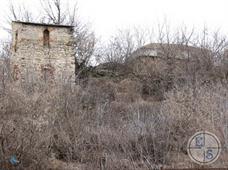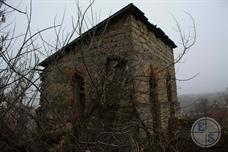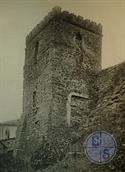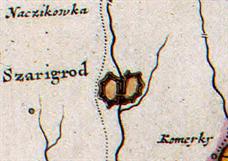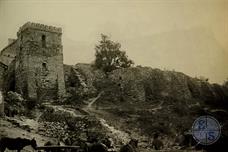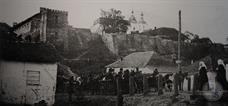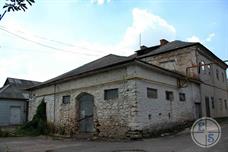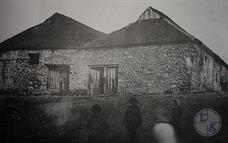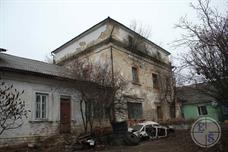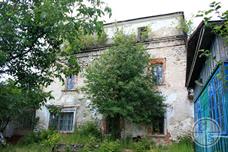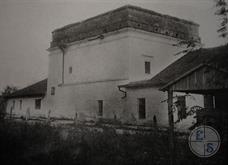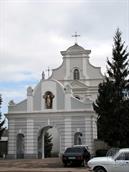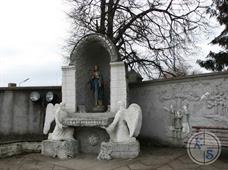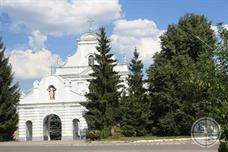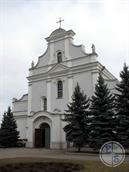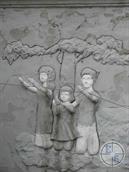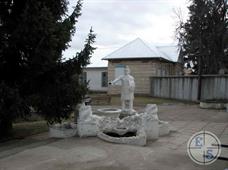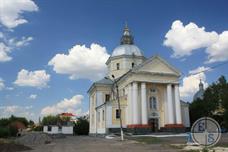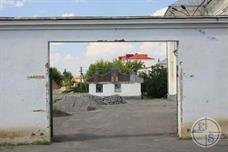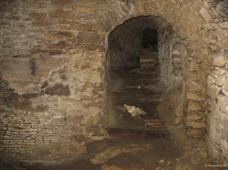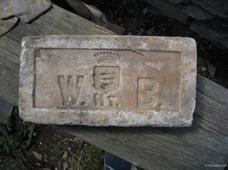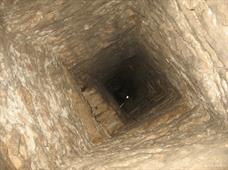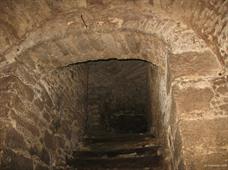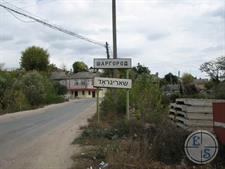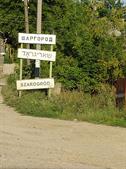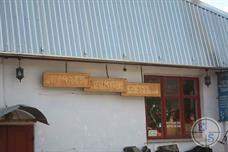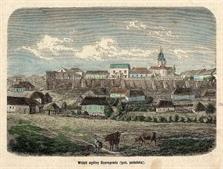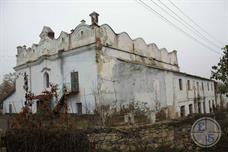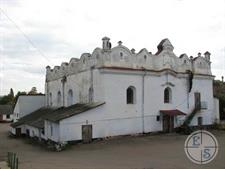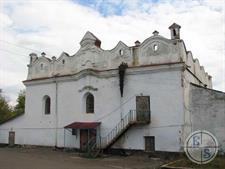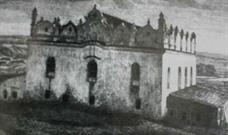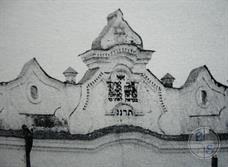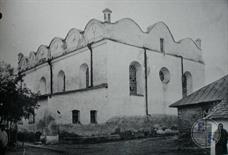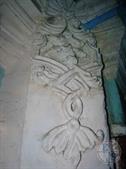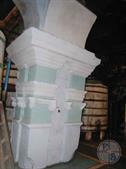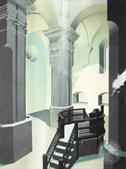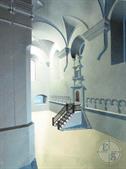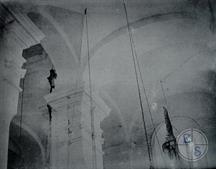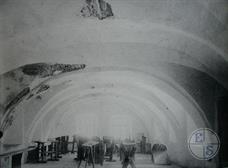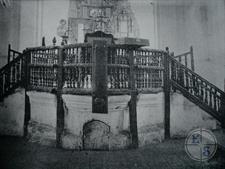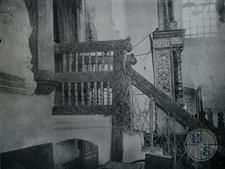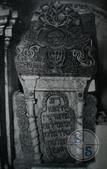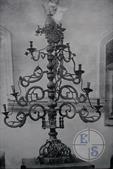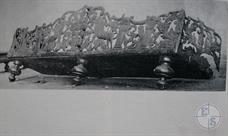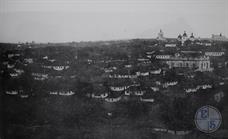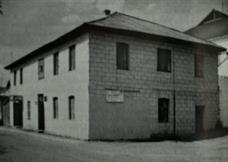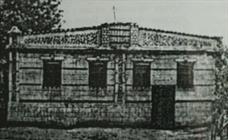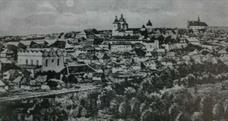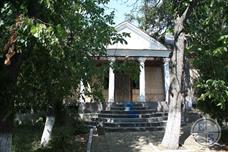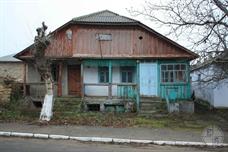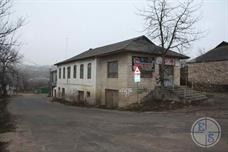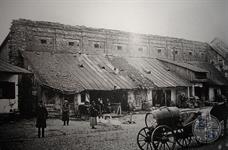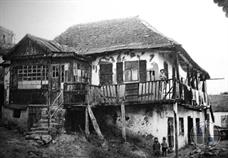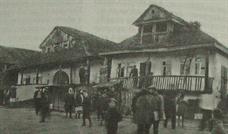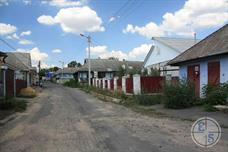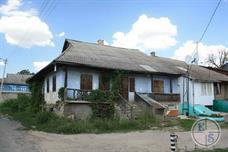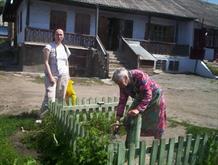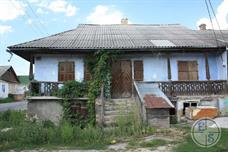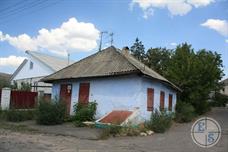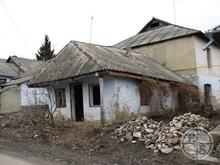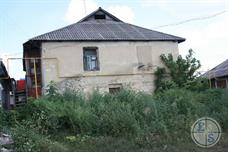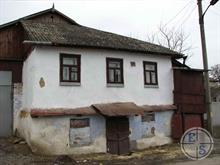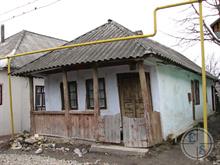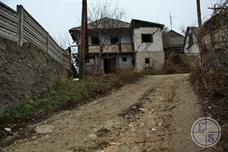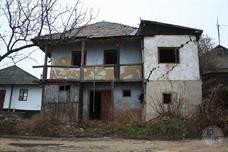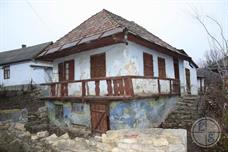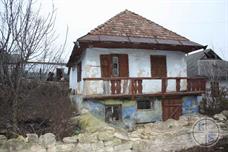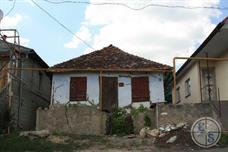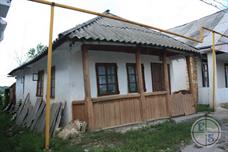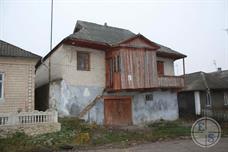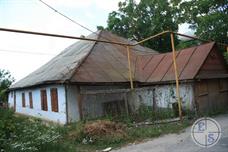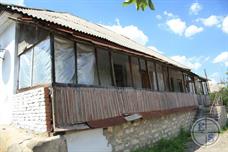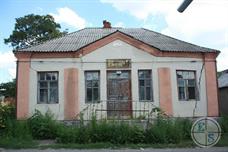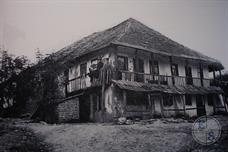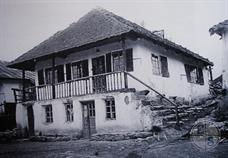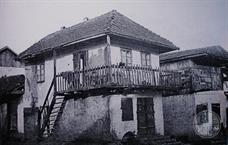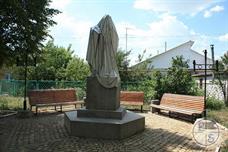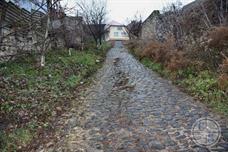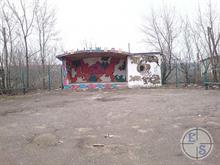Shargorod
Shargorod, 2008, 2012, 2015
Thinking about strengthening the defense south-eastern outskirts of the Commonwealth, King Stefan Batory granted in 1579 Jan Zamoysky, Supreme Chancellor and Hetman corona, deserted wasteland near the border with the province of Podolsk Bratslav, streams between goose bumps and sausage. According to the king, there ought to erect a fortified castle, which could ensure the protection of the region, deserted due to the incessant attacks of the Tartar hordes. King released the new settlers of these places from paying taxes for a period of twenty years.
In 1583 Zamoyski Chancellor has expanded its possessions in the eastern border province of Podolsk, acquired from the Bishop of Kamenetz Karchmaroaskuyu town, lying in the upper spine. On a high promontory at the confluence of the rivers to the Goose sausage he laid the castle which was to monitor the long-existing crossing here. In 1585 it was named Shary town and the whole region, adjacent to the river Murashko, was called Shargorodskaya parish.
Sharhorod located at the crossroads of important trade routes Podolsky province.
Polish King Sigismund III, given the strategic importance and tortovoe Shargorod castle and settlement development needs, 26 January 1588, granted the city rights Sharhorod.
Small cross-border settlement soon took a key position in the defense of the region. In addition Shargorod in possession Zamoyski had other border fortress: Rashkov, Yampil, Red, but it Sharhorod, a considerably better their fortified, became the capital of Ukrainian ownership Chancellor.
In 1583 Zamoyski Chancellor has expanded its possessions in the eastern border province of Podolsk, acquired from the Bishop of Kamenetz Karchmaroaskuyu town, lying in the upper spine. On a high promontory at the confluence of the rivers to the Goose sausage he laid the castle which was to monitor the long-existing crossing here. In 1585 it was named Shary town and the whole region, adjacent to the river Murashko, was called Shargorodskaya parish.
Sharhorod located at the crossroads of important trade routes Podolsky province.
Polish King Sigismund III, given the strategic importance and tortovoe Shargorod castle and settlement development needs, 26 January 1588, granted the city rights Sharhorod.
Small cross-border settlement soon took a key position in the defense of the region. In addition Shargorod in possession Zamoyski had other border fortress: Rashkov, Yampil, Red, but it Sharhorod, a considerably better their fortified, became the capital of Ukrainian ownership Chancellor.
In the system of fortifications of the city included the synagogue serf type. Princes Zamoyski, having the experience of business contacts with the Jews, tried evidently to support the development Shargorodskaya communities: Jews could hardly without their help to build such a large size stone structure already in 1589, the south-eastern outskirts near the confluence of the sausage in Goosebumps.
During the attack of the Cossacks in 1595, the entire community would take refuge behind two-meter thickness of the walls of their synagogue.
In the 1640s, the Jewish community Shargorod has become one of the largest in Podolia: some authors mention thousands of Jewish homes, others - three hundred. Jews lived compactly on the territory of the Old Town.
The martyrology destroyed during the Khmelnytsky Jewish communities "Titus Gayaven" ( "impassable mud") is what explains Shargorodskaya massacre: "And there were about three hundred wealthy householders, from morning till evening diligently study Torah, and all were killed."
Probably, some of the Jews Shargorod still managed to escape
Between 1672 and 1699. Shargorodskaya town with all Podolsky voivodship belonged to the Ottoman Empire. Occupied by the Turks in 1674 was named by them Sharhorod Small Istanbul - "Küçük İstanbul". Probably at the same time and became known as the Jews place Istanbul Zuta - "Little Istanbul".
During the attack of the Cossacks in 1595, the entire community would take refuge behind two-meter thickness of the walls of their synagogue.
In the 1640s, the Jewish community Shargorod has become one of the largest in Podolia: some authors mention thousands of Jewish homes, others - three hundred. Jews lived compactly on the territory of the Old Town.
The martyrology destroyed during the Khmelnytsky Jewish communities "Titus Gayaven" ( "impassable mud") is what explains Shargorodskaya massacre: "And there were about three hundred wealthy householders, from morning till evening diligently study Torah, and all were killed."
Probably, some of the Jews Shargorod still managed to escape
Between 1672 and 1699. Shargorodskaya town with all Podolsky voivodship belonged to the Ottoman Empire. Occupied by the Turks in 1674 was named by them Sharhorod Small Istanbul - "Küçük İstanbul". Probably at the same time and became known as the Jews place Istanbul Zuta - "Little Istanbul".
The Turks took care of the restoration of the city's buildings and fortifications, on the settlement of the city and the restoration of the city economy. One of its most beautiful buildings - a synagogue - they have occupied a mosque. It is known that the Turkish authorities have traditionally tolerant to Jews, preferred them Poles and Ukrainians as the urban population, especially in view of which lasted for 1670 years. attempts the conquest of the city by the Polish, the Cossack troops. But we do not have information about living in Shargorod Jews under Turkish control.
In 1699, the Ottomans, under the terms of the contract had to leave Karlovitskogo hem, left and Sharhorod.
Shargorodskaya community formed again in the first decades of the XVIII century.
It is known that in 1710 already existed in Shargorod community, which contained his rabbi. At the beginning of the XVIII century. Jews, who formed, apparently, most of the population, and occupied a leading position in the economic life of the resurgent city.
In 1734 Sharhorod suffered a pogrom, who staged one of Haidamak gangs involved in the anti-Polish speech Cossacks under the Shargorod centurion Verlana.
In 1699, the Ottomans, under the terms of the contract had to leave Karlovitskogo hem, left and Sharhorod.
Shargorodskaya community formed again in the first decades of the XVIII century.
It is known that in 1710 already existed in Shargorod community, which contained his rabbi. At the beginning of the XVIII century. Jews, who formed, apparently, most of the population, and occupied a leading position in the economic life of the resurgent city.
In 1734 Sharhorod suffered a pogrom, who staged one of Haidamak gangs involved in the anti-Polish speech Cossacks under the Shargorod centurion Verlana.
The census in 1765, to conduct a rabbi district participated. Nobah Mihalovich, recorded 2219 Jews, assigned to Shargorodskaya community - at that time it was the largest Jewish community in the hem.
Since the late 1730s. Shargorod Jews were in the area of direct influence of the founder of the Chassidic movement p. Israel Baal Shem Tov (Besht), has repeatedly come here to preach.
After the partitions of Poland in the formation of Podolia Sharhorod entered her Yampolsky district (since 1848 - in the Mogilev). According to the description of a land surveyor, made in 1799, in Shargorod there were already 283 Jewish homes, as well as the mall "stores of stone 36, Small 38.
In 1884, a merchant B. Soroker built stone two-storey building, the top floor which was designed to beit midrash, and the lower for the Talmud Torah.
At the beginning of the 1890s. in Shargorod opened a private Jewish school for boys, where he taught Hebrew and Russian grammar, Jewish history, the law of God, the Bible and general subjects.
Since the late 1730s. Shargorod Jews were in the area of direct influence of the founder of the Chassidic movement p. Israel Baal Shem Tov (Besht), has repeatedly come here to preach.
After the partitions of Poland in the formation of Podolia Sharhorod entered her Yampolsky district (since 1848 - in the Mogilev). According to the description of a land surveyor, made in 1799, in Shargorod there were already 283 Jewish homes, as well as the mall "stores of stone 36, Small 38.
In 1884, a merchant B. Soroker built stone two-storey building, the top floor which was designed to beit midrash, and the lower for the Talmud Torah.
At the beginning of the 1890s. in Shargorod opened a private Jewish school for boys, where he taught Hebrew and Russian grammar, Jewish history, the law of God, the Bible and general subjects.
In the years preceding World War I, with the general economic recovery and improved Shargorodskaya position of the Jewish community, there were about 5000 people. Jews held almost all the trade establishments Shargorod they belonged to four pharmacies and six forest depots, storage of agricultural machines and implements, four hotels, mёdovarenny factory, mill Sloboda Shargorodskaya and typography.
During the Civil War Sharhorod endured all the hardships that befell the majority of Jewish towns Podolia. In the summer of 1919 units of the Directorate arranged a pogrom here. According to reports the chief of department of national autonomies Ukrainian People's Republic E. Bograda on September 3, 1919 during a pogrom about a hundred Jews were killed in Shargorod, and many of the fugitives died of starvation, hiding behind the hills surrounding the town.
In the spring of 1920 in the village was established Soviet power. In 1923, when Sharhorod became a district center, there lived only 2 450 people (of which 1918 Jews). In 1925, here the Jewish shtetl Council was created paperwork which was conducted in Yiddish, the various artisans cooperatives were organized.
Since the mid-1920s. until the beginning of the Nazi occupation in Shargorod worked Jewish collective farm "Red Ploughman".
In 1930-ies. authorities shut down one after another all Shargorodskaya synagogue minyan began to gather in a private home.
Before the war, she lived there in 1939, 1664 Jews (74% of the population).
During the Civil War Sharhorod endured all the hardships that befell the majority of Jewish towns Podolia. In the summer of 1919 units of the Directorate arranged a pogrom here. According to reports the chief of department of national autonomies Ukrainian People's Republic E. Bograda on September 3, 1919 during a pogrom about a hundred Jews were killed in Shargorod, and many of the fugitives died of starvation, hiding behind the hills surrounding the town.
In the spring of 1920 in the village was established Soviet power. In 1923, when Sharhorod became a district center, there lived only 2 450 people (of which 1918 Jews). In 1925, here the Jewish shtetl Council was created paperwork which was conducted in Yiddish, the various artisans cooperatives were organized.
Since the mid-1920s. until the beginning of the Nazi occupation in Shargorod worked Jewish collective farm "Red Ploughman".
In 1930-ies. authorities shut down one after another all Shargorodskaya synagogue minyan began to gather in a private home.
Before the war, she lived there in 1939, 1664 Jews (74% of the population).
Shargorod occupation lasted from July 22, 1941 to March 20, 1944
At the time of the occupation in Shargorod it had most of the Jewish population. Only men of military age went to the front, but some families had to be evacuated. In total occupied Shargorod appeared about 1,800 Jews. Once through the city passed the German, Hungarian and Italian military units are established occupation regime of the Romanian administration: Sharhorod was on the territory of Transnistria.
The Jews assembled in unfenced ghetto streets of Lenin and Marx, were required to wear a yellow badge on their clothes and mark their houses with metal shields with the image of a six-pointed star. For Jews living 337 private houses were allocated, in which there were, according to official figures, 842 rooms. During the autumn here were deportirovny and placed in private homes and several public buildings still about 700 Jews from Bessarabia and several thousand - from Romania. Statistical examination that the Jews spent in Shargorod in December 1941, identified about 7,000 people who lived in the ghetto.
Council united Jewish community was established, headed by Meir Teiči, former chairman of Suceava community; shargorodtsev represented in the council who enjoyed universal respect accountant Solomon Shmulevich. The Community Council was able to provide assistance and protection to prisoners of the ghetto: Jewish activists from Romania were able to negotiate with the Romanian occupation administration, often resorting to bribes (Romanian Jews were deported mainly from Suceava, brought the money and things). Community Council saved many prisoners from forced labor and deportation to the camps, he informed in advance about possible raids in order to have time to hide Jews in Shargorodskaya catacombs.
At the time of the occupation in Shargorod it had most of the Jewish population. Only men of military age went to the front, but some families had to be evacuated. In total occupied Shargorod appeared about 1,800 Jews. Once through the city passed the German, Hungarian and Italian military units are established occupation regime of the Romanian administration: Sharhorod was on the territory of Transnistria.
The Jews assembled in unfenced ghetto streets of Lenin and Marx, were required to wear a yellow badge on their clothes and mark their houses with metal shields with the image of a six-pointed star. For Jews living 337 private houses were allocated, in which there were, according to official figures, 842 rooms. During the autumn here were deportirovny and placed in private homes and several public buildings still about 700 Jews from Bessarabia and several thousand - from Romania. Statistical examination that the Jews spent in Shargorod in December 1941, identified about 7,000 people who lived in the ghetto.
Council united Jewish community was established, headed by Meir Teiči, former chairman of Suceava community; shargorodtsev represented in the council who enjoyed universal respect accountant Solomon Shmulevich. The Community Council was able to provide assistance and protection to prisoners of the ghetto: Jewish activists from Romania were able to negotiate with the Romanian occupation administration, often resorting to bribes (Romanian Jews were deported mainly from Suceava, brought the money and things). Community Council saved many prisoners from forced labor and deportation to the camps, he informed in advance about possible raids in order to have time to hide Jews in Shargorodskaya catacombs.
Shargorod ghetto, the third largest (after the Mogilev-Podolsky and Bershad) on the territory of Transnistria, was known as the most organized and reliable. Many Jews who had fled from other places, including from the German occupation zone, found shelter here.
Community Board (consisting of 25 people) in the autumn of 1941 spent the most essential activities: opened a bakery to sell grain at a low price, a dining room, where the poor were fed soup and deli. Jewish police was organized, which included the top 15 young Zionists of Romanian Jews, headed by an officer, a lawyer by training, and two local Jews.
Extremely high population density, lack of food, soap and clean water (in the village there were only four wells, each of which drew their water dishes), firewood, as well as the most severe frosts of winter 1941/42 caused an epidemic of typhus. Of the 27 physicians who were in the ghetto, 23, fell ill with typhus; 12 of them died. The Community Council has made every effort to confront the epidemic in the ghetto pharmacy was opened, the hospital, acting city sanitary-epidemiological station, the production of soap has been adjusted, cleaned wells, repaired power and sauna. By April 1942 typhus epidemic faded.
Community Board (consisting of 25 people) in the autumn of 1941 spent the most essential activities: opened a bakery to sell grain at a low price, a dining room, where the poor were fed soup and deli. Jewish police was organized, which included the top 15 young Zionists of Romanian Jews, headed by an officer, a lawyer by training, and two local Jews.
Extremely high population density, lack of food, soap and clean water (in the village there were only four wells, each of which drew their water dishes), firewood, as well as the most severe frosts of winter 1941/42 caused an epidemic of typhus. Of the 27 physicians who were in the ghetto, 23, fell ill with typhus; 12 of them died. The Community Council has made every effort to confront the epidemic in the ghetto pharmacy was opened, the hospital, acting city sanitary-epidemiological station, the production of soap has been adjusted, cleaned wells, repaired power and sauna. By April 1942 typhus epidemic faded.
During the 1942 - 1944 biennium. Shargorod Jewish ghetto was used as labor on construction of roads and Murafa -Yaroshenka Sosnovka - Zhmerynka. Community Council tried to provide all possible assistance to those who were sent to forced labor, providing them with transport and housing. Among other functions, the community council were security in the city, contacts with the Romanian occupation administration, both local and central, to liaise with the help of the Committee in Bucharest, with the guerrillas, reconnaissance. In the ghetto he worked his court, communal treasury, the system of distribution of products and essential commodities.
Among the Soviet troops who liberated Sharhorod March 20, 1944, there was a division under the command of Colonel Stern-partisan group Schuster.
Shargorodskaya Jewish community survived the occupation after the war there was over a thousand Jews.
Among the Soviet troops who liberated Sharhorod March 20, 1944, there was a division under the command of Colonel Stern-partisan group Schuster.
Shargorodskaya Jewish community survived the occupation after the war there was over a thousand Jews.
In 1987, an outbreak of anti-Semitism Shargorod. The reason for that was the mass poisoning of residents locally produced cakes (one year old child died as a result of poisoning). Head of the company and its catering technologist were Jews (both of them put on trial), and in Shargorod became hard to spread the rumor that the Jews wanted to poison the Ukrainians. In the city and surrounding villages grew pogrom mood, which managed to overcome, not without some effort. It soon became clear that arrived in catering for the manufacture of cakes eggs were infected with salmonella.
Unique defensive synagogue 16c. That was used during the Soviet era as a warehouse, today (2012) returned a small Jewish community.
V.Lukin, "100 Jewish settlements of Ukraine"
Unique defensive synagogue 16c. That was used during the Soviet era as a warehouse, today (2012) returned a small Jewish community.
V.Lukin, "100 Jewish settlements of Ukraine"
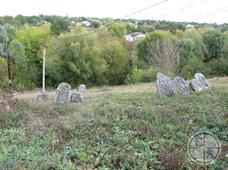 |
 |
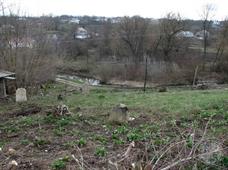 |
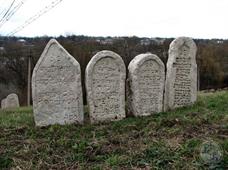 |
| Old Jewish Cemetery | |||
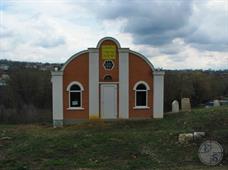 |
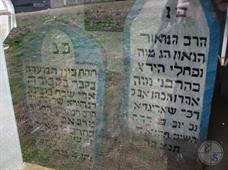 |
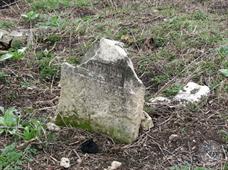 |
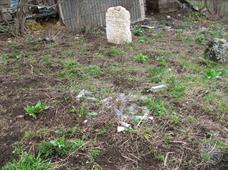 |
| Tent over the graves of rabbis - disciples of the Baal Shem Tov | |||
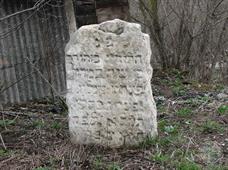 |
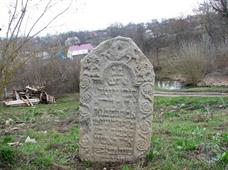 |
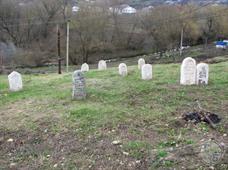 |
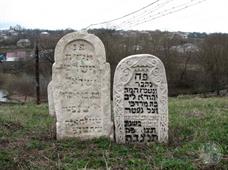 |
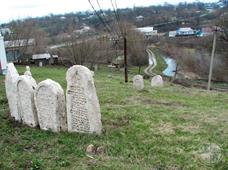 |
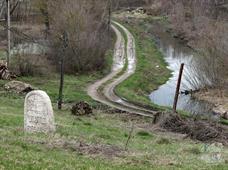 |
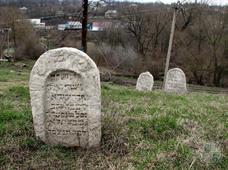 |
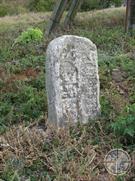 |
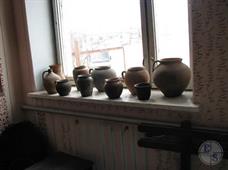 |
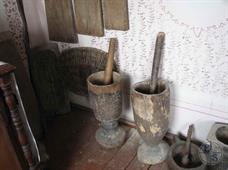 |
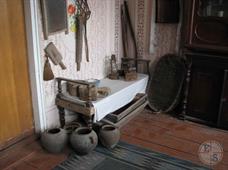 |
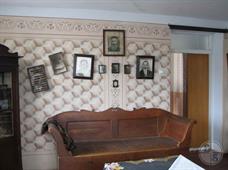 |
| Museum of Jewish life | |||
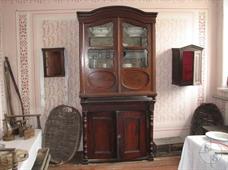 |
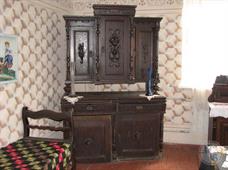 |
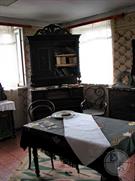 |
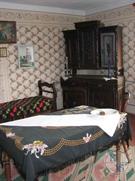 |
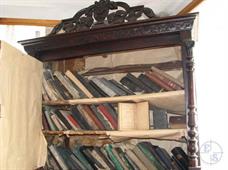 |
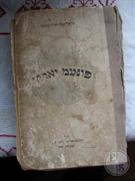 |
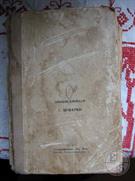 |
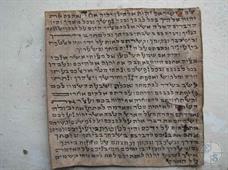 |
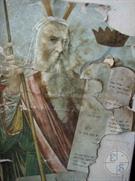 |
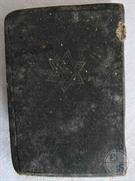 |
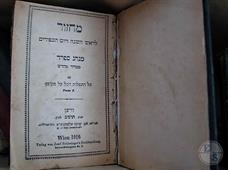 |
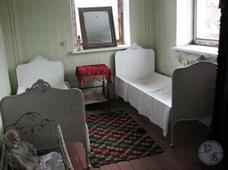 |
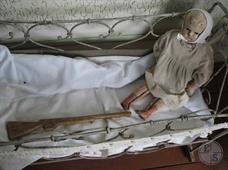 |
 |
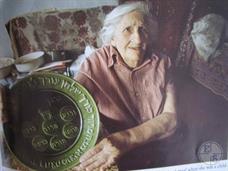 |
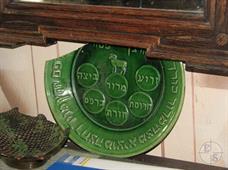 |
Vinnitsa Region

My shtetl
My shtetl
Jewish towns of Ukraine
Jewish towns of Ukraine
